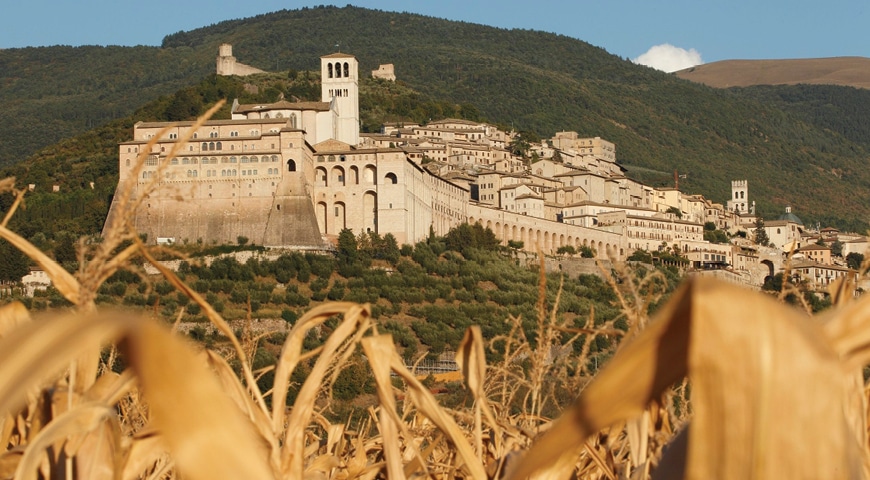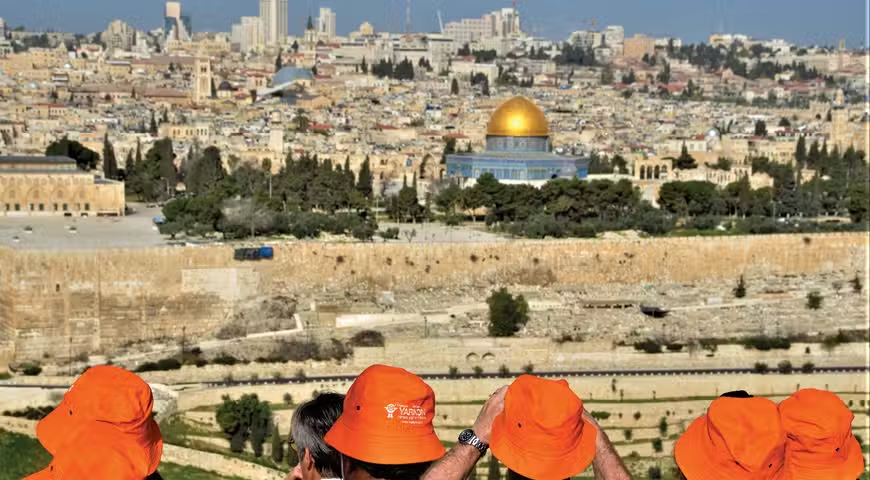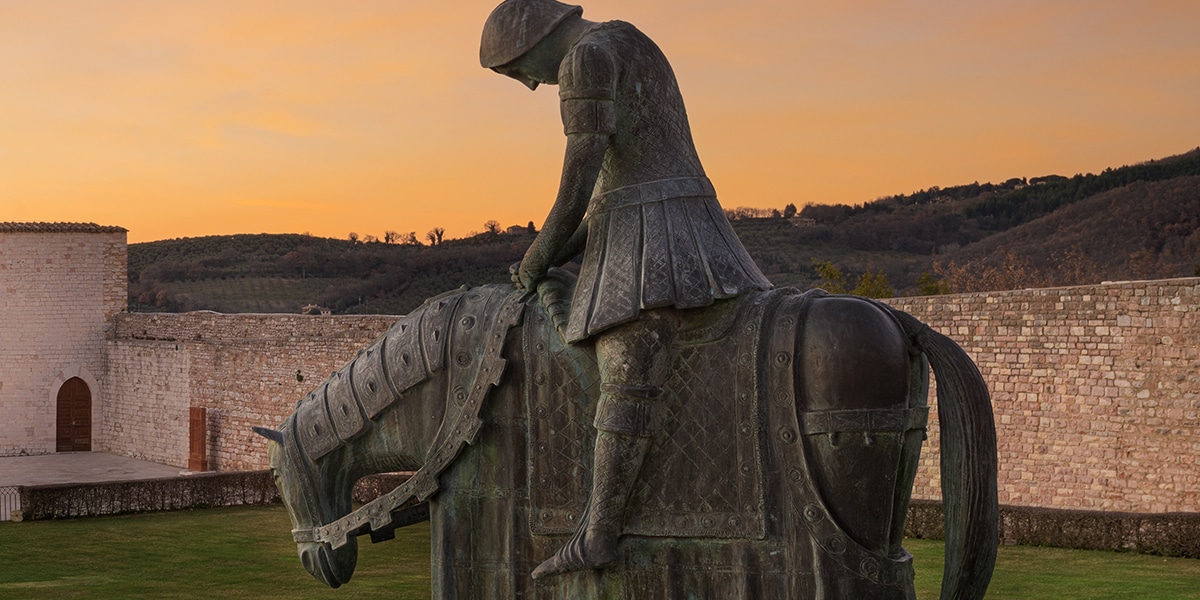Pilgrimages add a spiritual dimension to travel, opening us up to authentic and unexpected encounters with God. Here are seven reasons people make these holy journeys.
I’ve been leading pilgrimages to sacred places for about 30 years, experiencing the desires that spring up in my own heart and learning the many reasons why people choose to go on a sacred journey. Beginning in the 1990s, I offered trips to biblical lands that would help people experience the places of the Bible and thus learn more about the context of God’s word. But I have increasingly discovered that education is only one of many reasons people desire to travel to these holy sites. Sometimes we discover our deeper reasons for pilgrimage only while on the journey.
As we look forward to a future with fewer COVID-19 restrictions, I know that people will be eager to travel again and that many will experience a deeper longing to go on pilgrimage. Like all genuine desires, there are reasons God instills these yearnings within us. Here are some of the motives I’ve seen within people who long to go on pilgrimage.
1) Experiencing a Call
A call from God is experienced as a deep desire, whether it’s a momentary urge to do a good deed or a divine nudging toward a lifelong vocation. For anyone experiencing such a desire, it’s important to explore its sources and to consider ways to realize it.
People tell me, for example, that they’ve wanted to go to the Holy Land their whole lives, but that recently that desire has become more intense and tangible. I tell them that they might be experiencing God’s call, and that now it is up to them to determine if God is clearing their path by giving them the right circumstances, the ability to sacrifice what it takes from their savings, and the space away from their ordinary responsibilities to make the trip. If these things all become possible, then that’s a sure lead.
As people depart on pilgrimage, I invite them to consider how God has made this trip possible for them, who is sacrificing for their sake, and how all the pieces have fallen into place for this moment. Then I urge them to be grateful, relax, and follow God’s lead along the journey.
2) Marking a Life Transition
Many of the saints of old, when they experienced their conversion to a life devoted to God, marked that transition by going on pilgrimage, often journeying to Jerusalem or Rome. Arriving in the holy city symbolized the surrender of their lives to God. For similar reasons today, people experience the major transitions of life as sacred times, often associated with a desire for sacred travel.
Friends of mine recently said that they are going on a pilgrimage because their last child was finally leaving home, and they have been trying to figure out how to live purposefully with an empty nest. Pilgrimage became for them an opportunity to cross the threshold from the activities of family life to the more mellow days of life together. And pilgrimage seems to make that passage more intentional and God-centered.
Retirement can be a similar kind of moment. When people retire, they often mark the transition to this new phase in their life by taking a trip. Those who wish to seek God’s direction for the years ahead might make that retirement trip an experience of pilgrimage in order to designate their willingness to let God lead their way in the years to come.

3) Honoring a Loved One
The death of a loved one often leads people to choose a pilgrimage. Usually it takes about a year to get through the hard grieving that follows a painful loss, but after that first cycle of yearly events has passed, the survivor is ready for something new. A pilgrimage often marks that passage from brokenhearted loss to the desire to figure out how to get on with the rest of life.
A few years ago, three siblings traveled with me because their father had just died and left them with an inheritance. Rather than simply paying down credit cards or remodeling a kitchen, they decided to pay tribute to his life by traveling to Italy together in his honor. They knew that he would be proud that they were doing this to remember him and to express the faith he had given to them.
On every trip I lead, there are usually a few recently widowed women and men. While visiting the holy places, they are comforted by a deep sense that the beloved is with them along the way. But, at the same time, they gain new confidence that they can make it on their own, with God’s grace and the help of family and friends.
4) Praying for a Need
Christian shrines and tombs of the saints throughout the world are often adorned with votive offerings: tangible objects deposited and displayed at the site to express the petition, trust, or thanks of pilgrims. Traditionally at healing shrines, the offering takes the form of small silver models of the afflicted body parts or hearts made of precious metals. These are physical signs that healings are happening at this place, and others can call upon divine help in their needs.
When a pope brings a votive offering to a shrine, it may be a crown for the Virgin Mary or a golden rose as an expression of affection. When I bring an offering, it is more likely a flower to leave at the altar, a monetary offering for the shrine, or a votive candle lit to implore the saint’s intercession.
Pilgrims need time to pray at sacred places and to remember the purpose of their journey. I often remind my groups to pray for their intentions and those of their family and friends back home. I find it helpful to ask questions like these: What are you asking God to do in your life at this place? How do you hope to be different after this pilgrimage than when you started?
5) Enriching a Marriage
Married couples sometimes get into ruts. Life together becomes routine and predictable. Pilgrimage can be a means to shake things up in a relationship, an opportunity to renew the bonding forces of love. Because love is not measured by emotional feelings from day to day, but by the accumulated choices and activities together, the shared memories of a life-changing pilgrimage can renew a marriage like nothing else.
My wife and I both love to travel. We both enjoy photography, experiencing new places, and purchasing remembrances for our home. But when we go on pilgrimage together, there is an extra layer of significance that can’t be quantified in photos and souvenirs. A sacred place enriches the soul. We return to ordinary life more refreshed in spirit and more bonded on a level that is difficult to express.
When married couples travel with other couples and get to know one another, they have the opportunity to uplift the marriages of one another. By getting to know other couples, learning about their lives, and having fun together, a couple can find their own marriage becoming more whole. When all that becomes enriched by prayer and the sacraments on pilgrimage, the results are transformational.

6) Encountering God More Experientially
Throughout the Bible, people encounter God in new ways when away from home and on a journey. Abraham and Sarah had to leave their homeland in order to get to know God. The people of Israel grew to understand their identity while traveling through the wilderness. Mary and Joseph lived their earliest time with their infant son while journeying from Bethlehem to Egypt. In our tradition, people meet God in experiences on the road.
I recall the feelings associated with a midlife transition I experienced a couple of decades ago. The anxiety, uncertainty, and fear associated with midlife brought me to a place where I knew I had to go somewhere—preferably somewhere far away, mysterious, and deeply spiritual. I had an intuitive sense that such a transcendent journey would allow me to return home ready to take the first step toward the second half of life.
I’m not sure what it is about the spiritual journey that is so transforming, but people through the ages in every religious tradition have found it to be so. If you need to be deeply renewed, purged of toxins, and ready to start life anew, let God lead you on pilgrimage.
For Christians, pilgrimage appeals to our ability to encounter God through creation, through history, and especially through what Celtic spirituality calls ‘thin places.’ We experience holiness in those locations where the barrier between earth and heaven is particularly thin. Because of our sacramental imaginations, we want to see, hear, smell, taste, and touch those places where people have experienced God in unique and particular ways for a long time.
7) Joining with Christians across Time and Place
When Jesus told the people of Nazareth that no prophet is accepted in his hometown and by his own people, he was speaking a truth about familiarity. In our familiar places, our expectations are lowered. This is the reason we have to leave home and travel in order to receive the grace of pilgrimage. Life with God is full of surprises, and God is quick to go beyond our expectations, but sometimes we’ve got to leave our town and our neighbors for a while in order to experience the truth of this reality.
When I travel to places of pilgrimage, Middle Eastern biblical sites, striking Gothic cathedrals, sanctuaries of the saints, places where Mary has appeared‚ I’m overwhelmed by the beauty of the Church. Each place of pilgrimage is soaked with the prayers of people who have come there for centuries. When I see people coming from all over the world‚ some wearing indigenous attire‚ to a place very different from my homeland, offering exotic foods, and expressing unique customs, I’m awakened into hopeful expectancy.
Yet, amid all the diversity of these places of Christian pilgrimage, I know there is one Lord, one faith, one Baptism. I experience a unity with all these holy people, sisters and brothers in sorrow and joy, children of God seeking healing and hope. I know that in Christ I am united with all these people in a way that transcends everything else. So when another group is filling the pilgrimage site to celebrate a wedding, mourn at a funeral, or offer the Mass, I don’t resent the fact that I can’t get closer or capture that perfect photo. I am able to stand back, offer a quiet prayer, and rejoice that this sacred place is enriched with living faith, that it is not a museum but rather a place to encounter the living God.
Because I experience the truth, goodness, and beauty of the Church on pilgrimage, I can return to my hometown and my familiar places and there remember that God is real. I can know again, as if for the first time, that God is alive in my everyday life, that I can encounter the divine presence in my family, school, and work. Pilgrimage has renewed my soul, and I can return home with new eyes and a converted heart.








